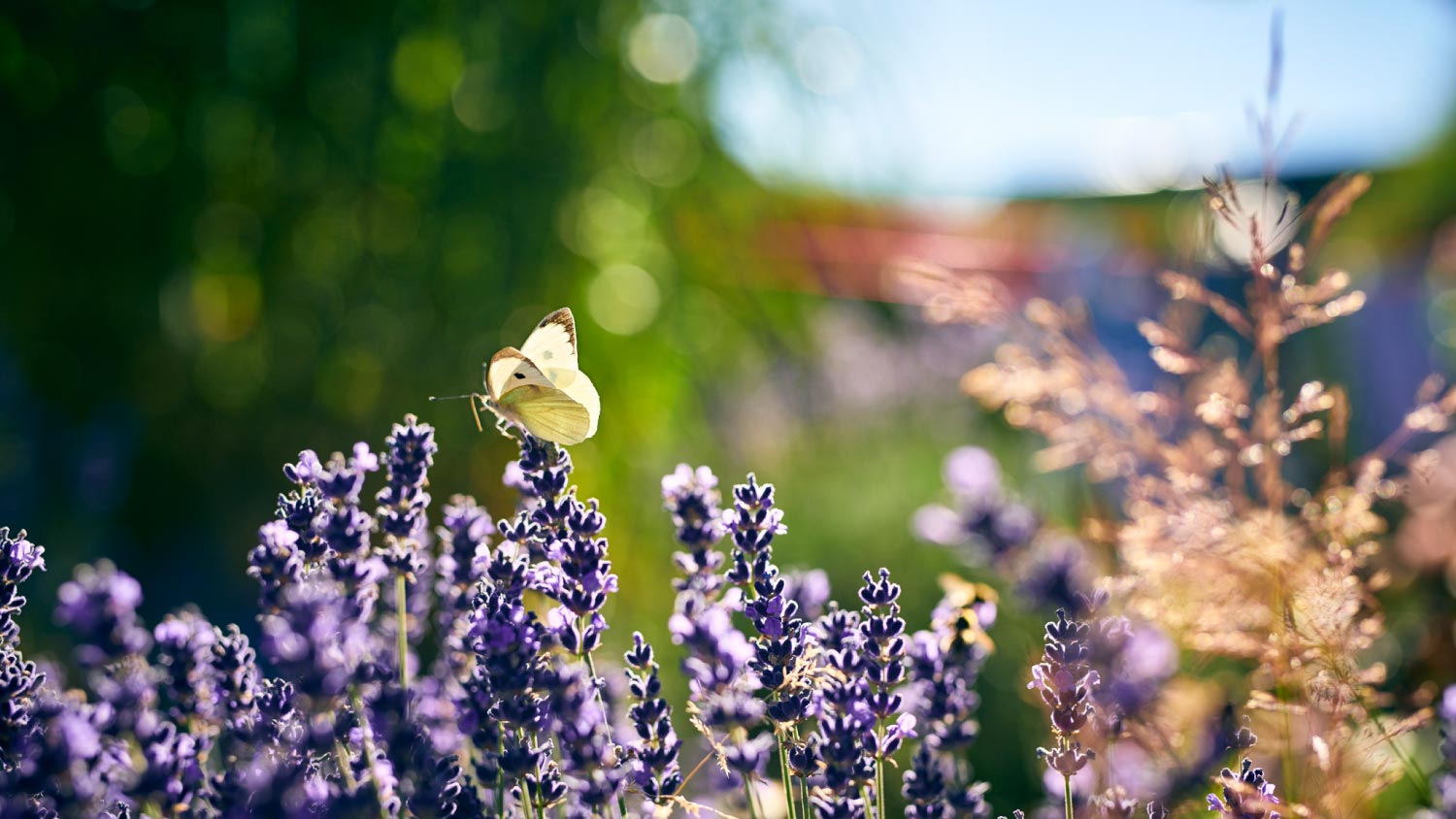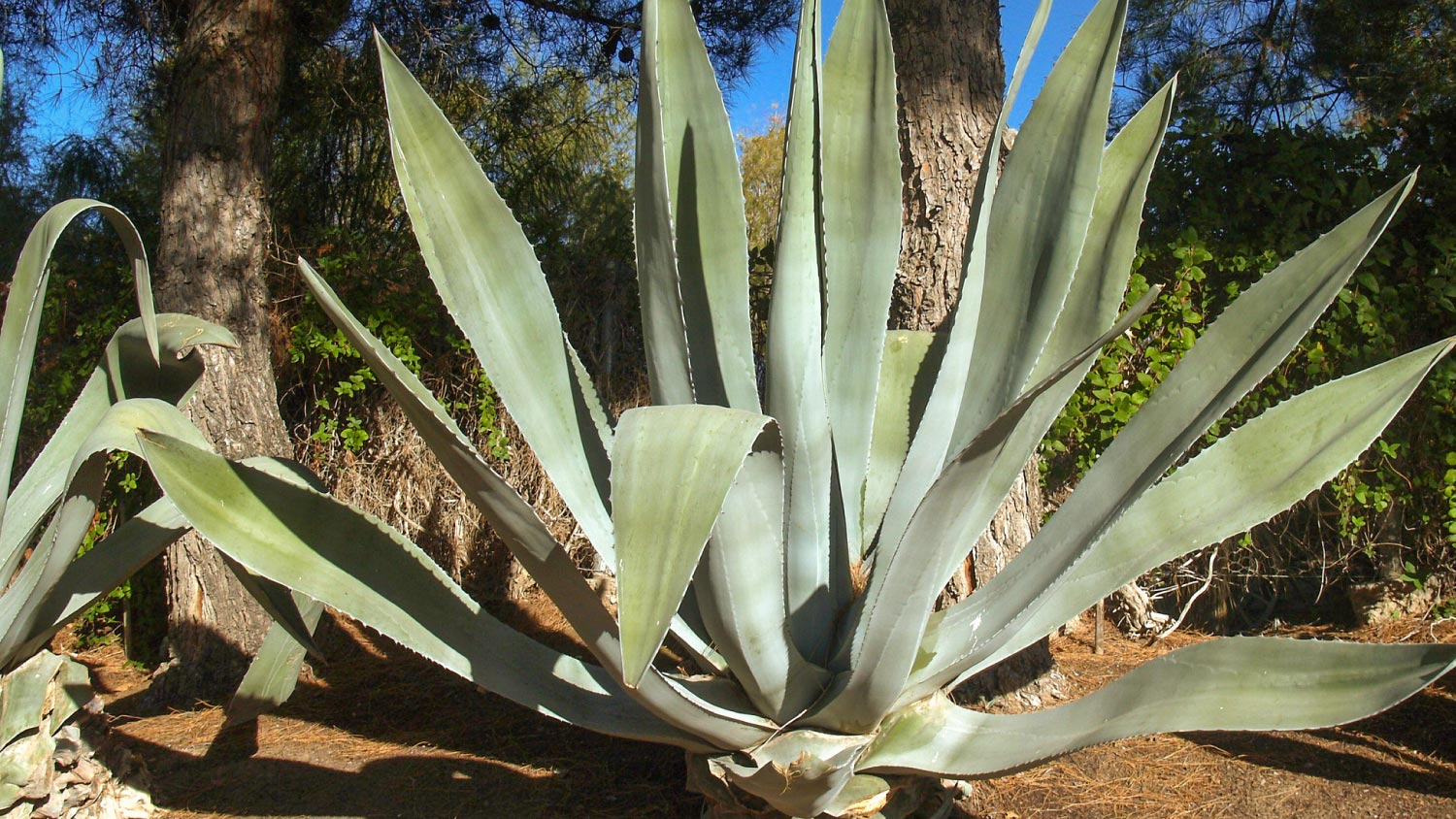
Railroad tie retaining wall costs can vary widely, so getting an accurate estimate for your needs is a good idea to set your budget appropriately.
Don’t add fuel to a wildfire—opt for fire-smart landscaping instead


Wildfires are an unfortunate reality for many homeowners, and they are only becoming more frequent. It’s important to minimize the risk to your home by planting low-flammable plants in your landscaping.
While no plants are truly fireproof, there are options that can better withstand a fire event and will provide little to no fuel for a growing fire when kept several feet away from flammable structures. These nine fire-resistant plants can help you create a fire-smart landscape.

Lavender offers a lot of benefits in addition to being a slow-burning plant (as long as you keep it moist). It offers bursts of purple and green color to your landscape, plus it has a fresh fragrance.
Although you should keep it moist for better fire resistance, lavender has low water needs and is a low-maintenance landscaping option. It is deer-resistant while also attracting birds, butterflies, and other pollinators to your lawn. When growing lavender, keep the following care tips in mind:
Soil: Lavender likes rocky, sandy, or otherwise well-draining soils with a pH of 6.5–8.
Water: Lavender has low water needs, but keep it moist for better fire resistance.
Sunlight: Full sunlight
Hardiness Zone: 4–8
Sage isn’t just good for seasoning your butternut squash for dinner. This perennial herb is a fire-resistant plant that can add bright blue, purple, or pink flowers, and it grows pretty tall and wide for good garden coverage. Sage is easy to care for, plus you can use the leaves for cooking.
Soil: To grow sage, make sure the soil is loamy and sandy with a pH of 6–7.
Water: Sage has low water requirements.
Sunlight: Partial sun
Hardiness Zone: 4–9

An ornamental grass, blue fescue works great as a decorative element in a unique flower bed or ground cover for a drought-resistant landscape. Although it does produce tall, flowering stems, this plant often looks best when the flowers are trimmed away. Blue fescue is an evergreen, but it usually only lives for about four years.
Soil: Blue fescue will thrive in any well-draining soil with a pH of 5.5–7.5.
Water: Blue fescue stores water well and needs little watering.
Sunlight: Full sunlight
Hardiness Zone: 4–9
A fire-resistant landscape doesn’t have to be a sea of concrete. The California native red monkey flower will offer bursts of color to your property nearly all year long. Plus, this shrub attracts pollinators, particularly hummingbirds. It needs little care, but be sure to lightly prune it in the summer for the best blooms.
Soil: Red monkey flowers need soil with moderate drainage and a pH of 5.5–8.
Water: You can water this plant as little as once a month once it is established.
Sunlight: Full sun to partial shade
Hardiness Zone: 6–11

Similar to the red monkey flower, the California fuschia, also known as the Hummingbird Trumpet, is a plant with bright red blooms, although rather than going dormant in summer, this plant is often at its peak bloom in the hotter months.
It is deer-resistant and attracts many pollinators with its tubular flowers. This plant likes to spread out, and it grows fast, so make sure it doesn’t grow too close to structures to maintain its low-flammability properties.
Soil: Give your California fuschia plants a spot with good soil drainage and a 6–8 pH.
Water: This is another low-water plant that can be watered about once a month once established.
Sunlight: Full sun to partial shade
Hardiness Zone: 8–11
Despite the name, this plant isn’t going to melt in the heat. In fact, ice plants are actually succulents that thrive in warm, sunny locations and are named after the short fibers on the plant that look like ice crystals.. Plant them in the garden or use them as ground cover for a fireproof landscape. This fire-resistant plant requires little watering.
Soil: Ice plants prefer sandy, dry soil with a pH of around 7.
Water: Ice plants have low water needs.
Sunlight: Full sunlight
Hardiness Zone: 6–10

With its broad, thick leaves, agave does a great job of storing water while also adding some drama to a landscape. Agave plants can grow over 10 feet tall, although you can find smaller options for your yard.
Soil: Agave needs dry soil with a pH of 6–7.
Water: Established agave plants need watering a few times per month in the summer, or about once per month in cooler seasons.
Sunlight: Full sunlight
Hardiness Zone: 5–11
Coreopsis, or tickseed, works well for fire-prone landscapes in a wide variety of climates. It has bright yellow, pink, or red flowers that bloom from early summer to fall. Most coreopsis grows about 1 foot tall, but for a fire-smart landscape, keep taller varieties that grow 2 feet or more about 30 feet away from any structures on your property.
Soil: Coreopsis tolerates many soil types with a pH of 5.5–6.5
Water: Coreopsis is drought-tolerant, but water it about once per week for the best blooms.
Sunlight: Full sunlight
Hardiness Zone: 3–9

This mounding perennial is popular for landscape borders and has yellowish-green flowers, and its leaves turn a reddish hue in the fall. It is resistant to many pests, including deer and rabbits, but keeps kids and pets away. Cushion spurge is toxic when ingested, and you’ll need to wear gloves when pruning it as it may cause skin irritation.
Soil: Cushion spurge prefers dry, well-draining soil with a pH of 6 to 8.
Water: Give this fire-resistant plant about 1/2-inch of water every 7 to 10 days.
Sunlight: Full sunlight to partial shade
Hardiness Zone: 4–8
Whether you DIY your landscaping design or want to hire a landscaping company near you, fire-resistant plants are a smart choice for any homeowner.
From average costs to expert advice, get all the answers you need to get your job done.

Railroad tie retaining wall costs can vary widely, so getting an accurate estimate for your needs is a good idea to set your budget appropriately.

How much do hedges cost? Discover average hedge installation prices, key cost factors, and tips to save money on your landscaping project.

We break down the cost to remove bamboo, which is slightly higher than other forms of tree removal. It's a difficult DIY task because of bamboo's hardy underground roots.

It’s natural to judge, but which home aspects get the most criticism? From lawn care to messiness, find out what homeowners really judge the most.

St. Augustine grass generally fares well in warm climates, but brown spots happen. Here are some ways to revive seemingly dead St. Augustine grass.

Trying to decide whether to put in live lawn or artificial grass? Read about the pros and cons of artificial grass and whether it’ll work for your lawn.